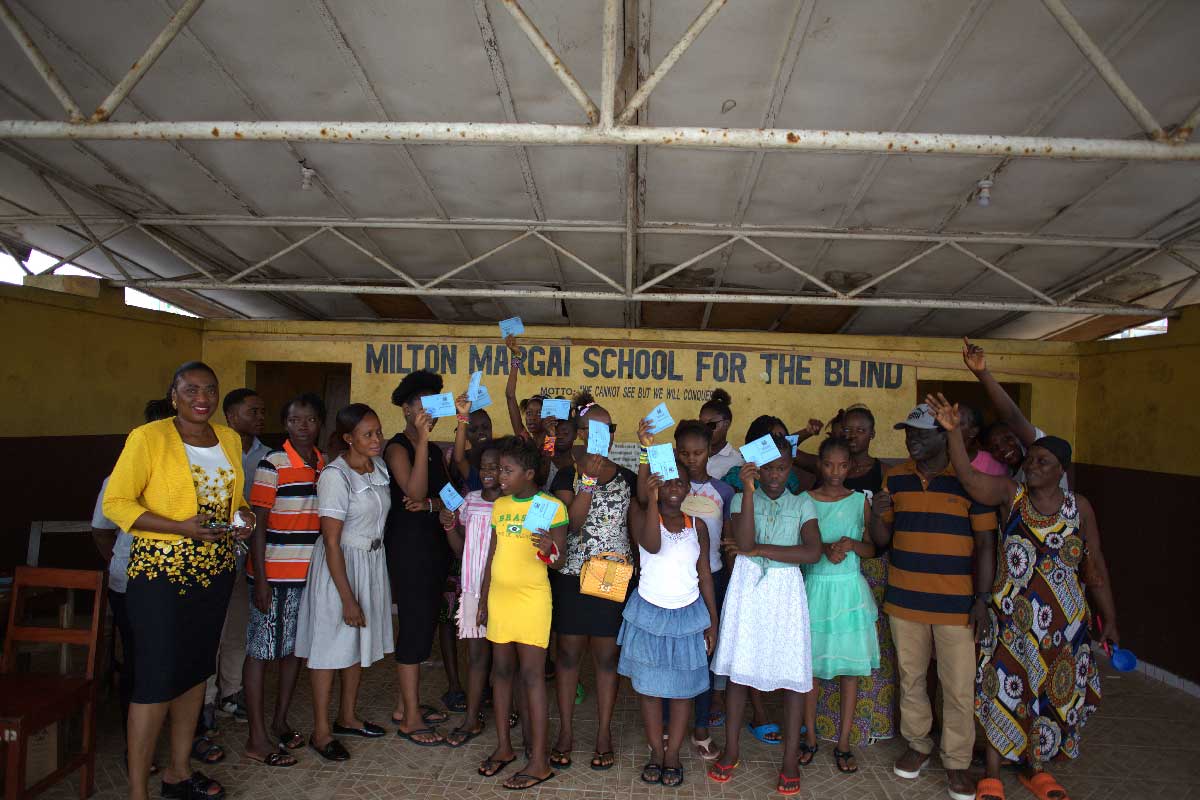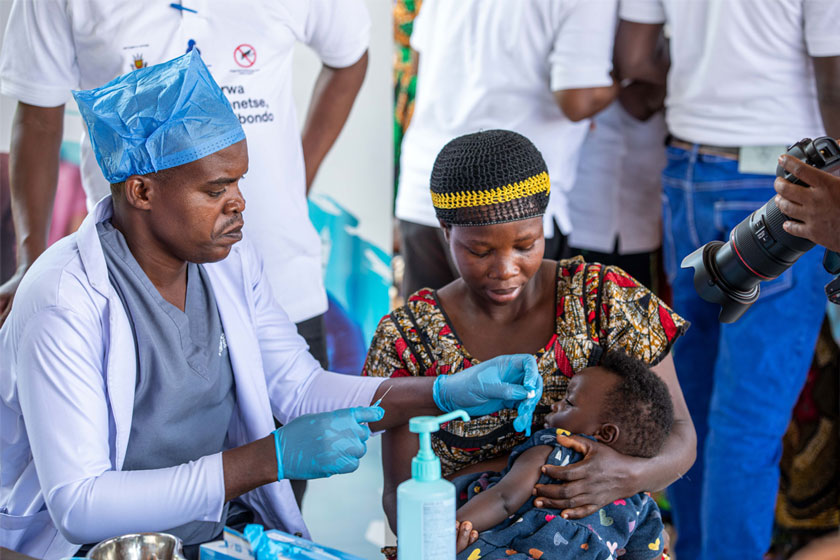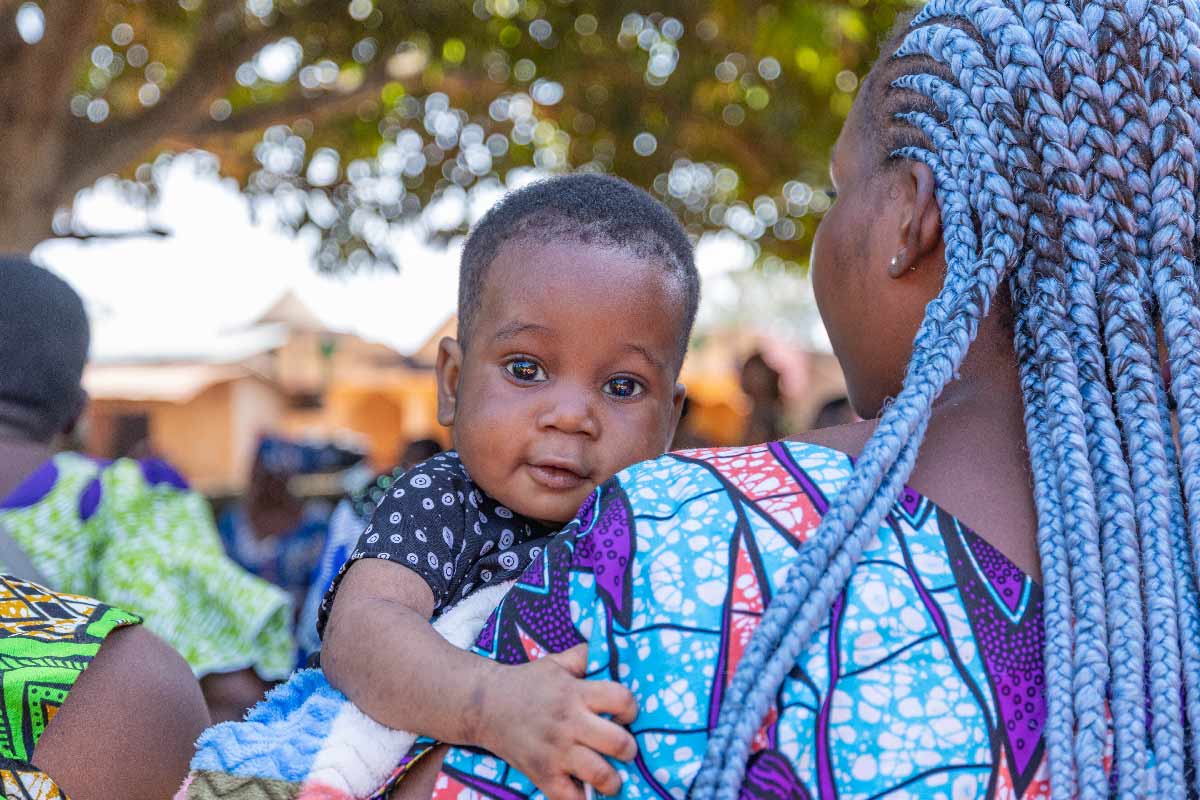New evidence shows investments in vaccination produce even greater returns than previously thought
Analysis suggests that investments in vaccination programmes will result in US$ 0.8 trillion in returns over the next ten years.
- 3 August 2020
- 4 min read
- by Gavi Staff
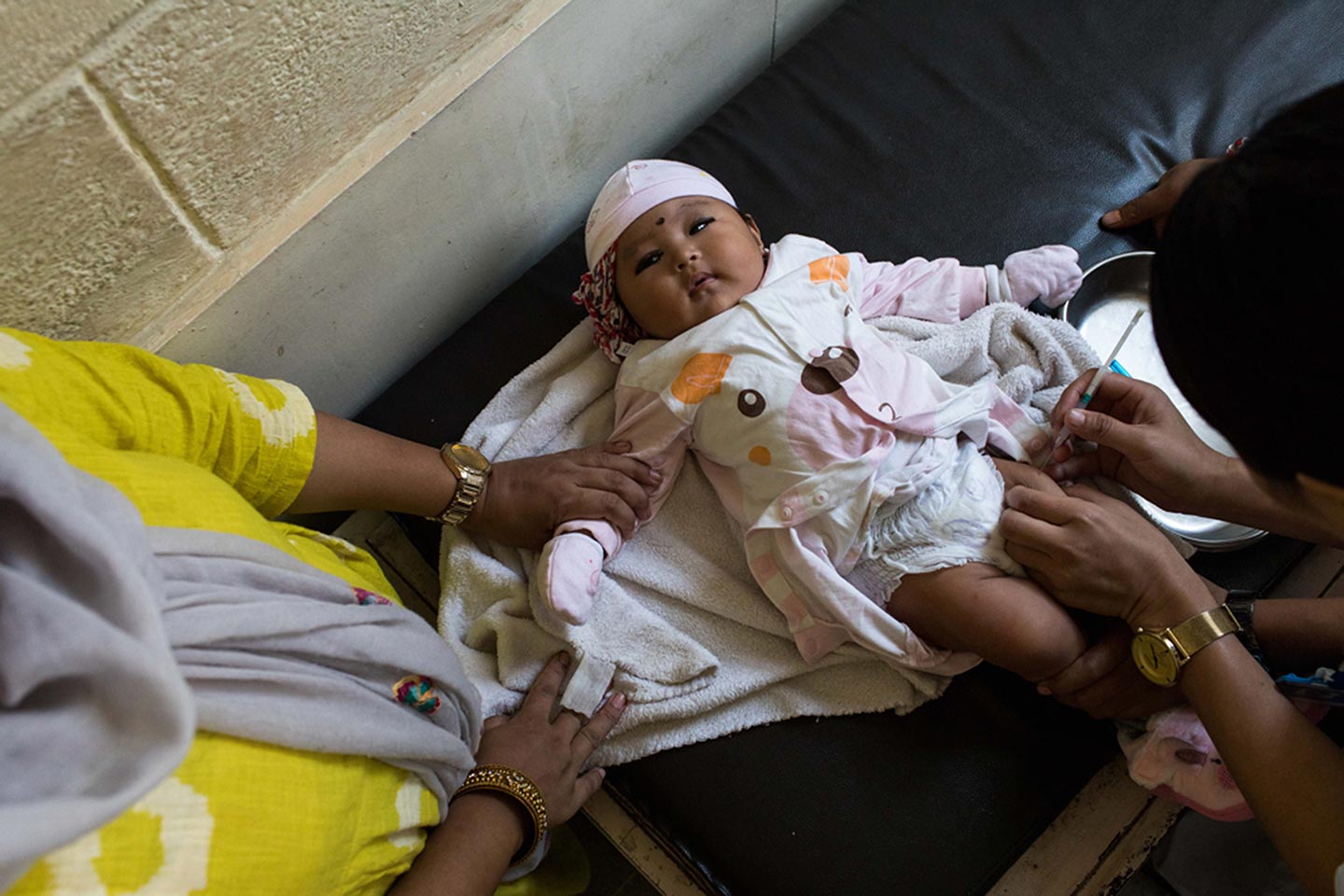
The COVID-19 pandemic is disrupting childhood immunisation programmes in many low- and middle-income countries, with health agencies urging a resumption of vaccination programmes before children’s lives are threatened by other diseases. COVID-19 lockdowns and reductions in care seeking for preventive services may also result in economic losses to be felt over the course of many years.
This is, in part, due to immunisation programmes offered in low- and middle-income countries, which provide a high return-on-investment (ROI) in terms of the avoided economic costs of diseases and the value of lives that would have been lost.
The Decade of Vaccine Economics (DoVE) Project, carried out by the Johns Hopkins Bloomberg School of Public Health’s International Vaccine Access Center (IVAC) for nearly ten years, has computed the return-on-investment for vaccines preventing ten infectious diseases in 94 low- and middle-income countries, including 73 countries that have received support from Gavi, the Vaccine Alliance.
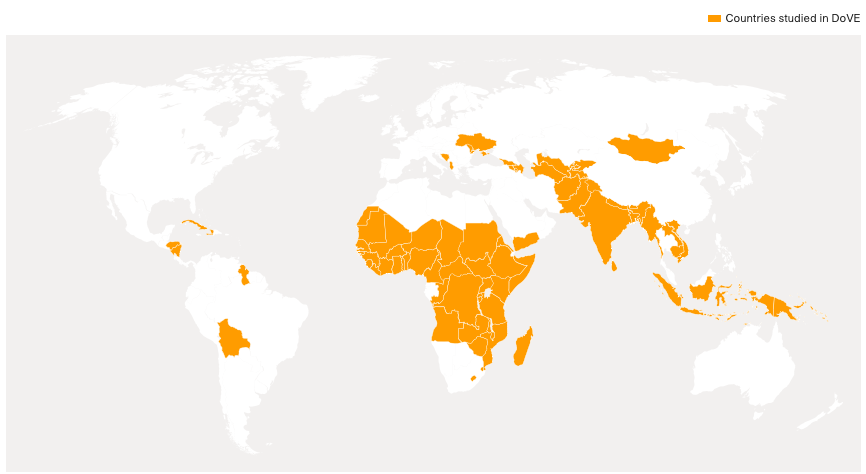
Just how good an investment are vaccines?
An economic lens demonstrates that immunisation programme costs are truly investments with tangible returns, just like any other type of investment.
Using a model that factors in treatment costs, lost wages, and productivity losses, we estimate that the costs averted via these immunisation programmes in 94 countries will amount to US$ 828.5 billion for the next decade. This estimated net benefit is about 20 times larger than the costs forecasted for vaccination programmes over the next ten years, from 2021-30.
As a point of reference, publicly traded American companies in the S&P 500 have returned an average of US$ 2.16 for every US$ 1 invested after ten years.
The ROI estimates are helpful for countries with competing priorities, since social return-on-investments help compare investments in health, such as vaccine programmes, with other public social investments such as infrastructure, education, and social safety nets—all of which have different success metrics.
Two methods demonstrated a strong ROI for vaccine programmes
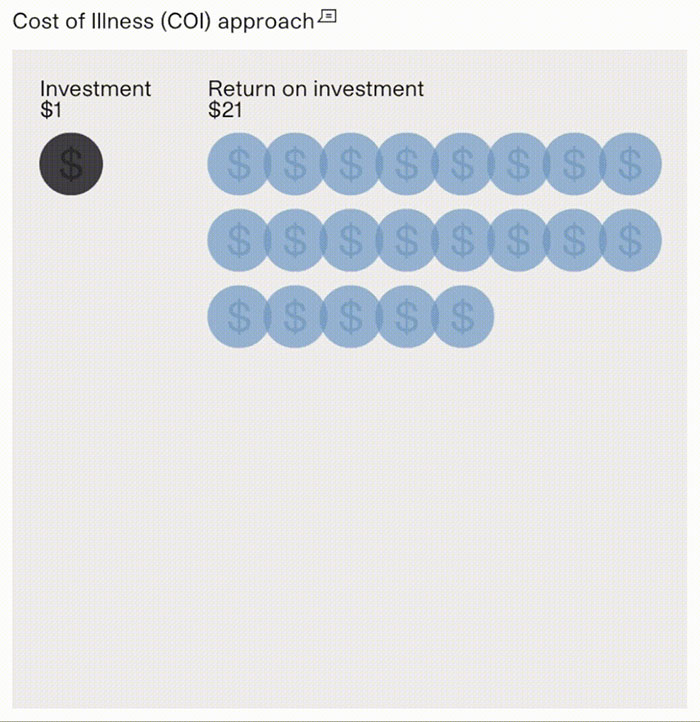 |
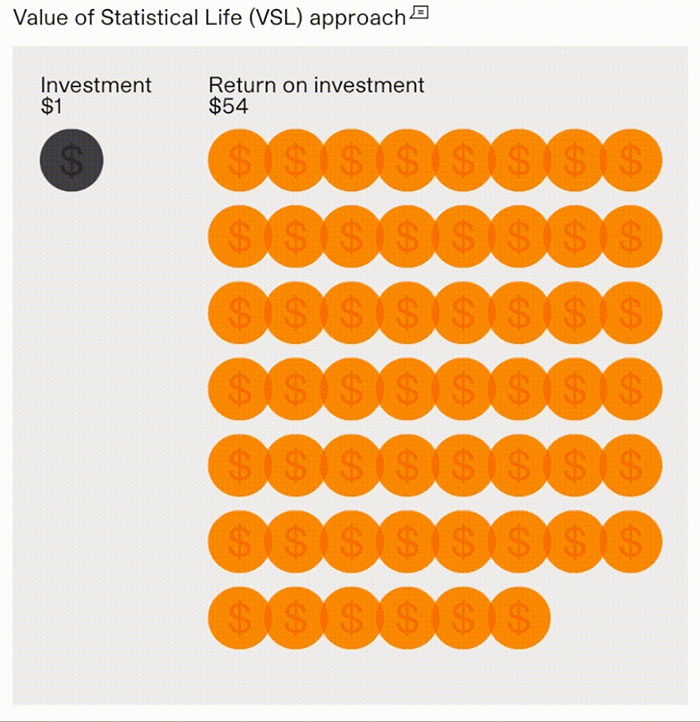 |
The cost-of-illness (COI) model that showed a US$ 21 return on a US$ 1 investment factors in treatment costs, transportation costs, lost caregiver wages and productivity losses. This is due to disability and premature death that are predicted not to occur because of vaccination in 73 countries that have received Gavi support between 2010 and 2020. To get estimates on averted infections from each vaccine in each country, our team partnered with Imperial College of London’s Vaccine Impact Modelling Consortium (VIMC).
Improvements in health have value beyond the health system costs averted and losses in economic productivity. To capture other benefits, we assessed the benefits of vaccines from a value of a statistical life (VSL) approach. A rigorously derived VSL finds that vaccine programmes in the same Gavi countries are expected to generate approximately US$ 2 trillion in benefits from 2021-2030, making the anticipated future ROI US$ 54 for every US$ 1 invested in vaccine programmes.
Watch a short video to learn about how Vaccine ROI is calculated.
How does ROI in vaccines vary by region?
Regardless of the region of interest, vaccine programmes display a tremendous return-on-investment to society and are expected to continue to generate major benefits well into the future.
- In the Africa (AFRO) region, COI-based economic benefits for immunisation programmes are projected to reach US$ 415 billion between 2021 and 2030 with incurred costs of US$ 17 billion resulting in an ROI of US$ 23 for every US$ 1 invested.
- For the Southeast Asia (SEARO) region, the projected COI-based economic benefits between 2021 and 2030 total US $ 282 billion with projected costs of US$ 12 billion resulting in an ROI of US$ 22 for every US$ 1 invested.
Learning more about pandemic-related costs of vaccine programme disruptions
To determine what impact COVID-19 may have on realising projected economic benefits globally, the DoVE team is applying the same models used to generate these ROI estimates to model the potential reduction in economic benefits due to cancelled and delayed immunisation campaigns and disrupted routine immunisation.
Our team is also modelling the equity implications of vaccine investments through a project called Vaccine Economics Research for Sustainability and Equity (VERSE).
Bryan Patenaude is an economist at IVAC and an assistant professor of economic evaluation at the Johns Hopkins Bloomberg School of Public Health’s Department of International Health. At IVAC, Bryan is the PI of the fourth iteration of the Decade of Vaccine Economics (DoVE-IV) project.
Elizabeth Watts is a research associate and health economist at IVAC. She works on economic models for the Decade of Vaccine Economics (DoVE) project and is a co-investigator for the TyVAC Cost-of-Illness study in Nepal.

